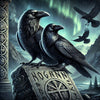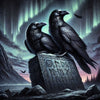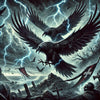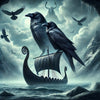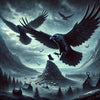What Role Does Fenrir Play in Norse Mythology, and Why Does He Matter?
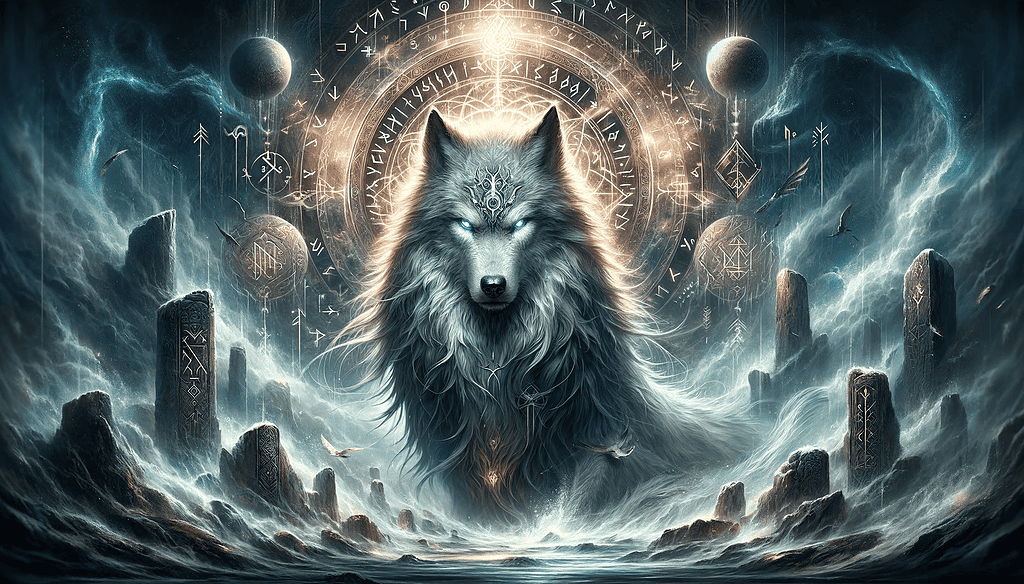
In the captivating world of Norse mythology, one creature stands out as both awe-inspiring and terrifying: Fenrir, the mighty wolf. Unlike many mythical animals that serve or protect, Fenrir embodies the raw, untamed power of nature. Known for his immense size, fierce strength, and inevitable role in the end of the world, Fenrir is more than just a creature of legend. He is a symbol of rebellion, fate, and the unstoppable forces of nature that no one—not even the gods—can control. But why does Fenrir play such a significant role in these ancient stories, and what makes him such a legendary figure? Let’s explore his origins, his role in Norse myth, and why his story still captures imaginations today.
Fenrir’s Origins: The Wolf Born of Mischief and Giants

Fenrir’s story begins with his powerful yet unusual family. His father is Loki, the Norse god known for his cunning, trickery, and shape-shifting abilities. Loki’s reputation as a troublemaker precedes him, and his lineage only adds to the complexity of Fenrir’s tale. Fenrir’s mother is Angrboda, a giantess from the land of Jotunheim. Together, Loki and Angrboda bore three children—each more formidable than the last. These children were no ordinary beings: there was Jormungandr, the Midgard Serpent, Hel, the ruler of the underworld, and finally Fenrir, the mighty wolf. Each of these offspring posed a serious threat to the gods of Asgard, but Fenrir, with his unstoppable growth and wild nature, was particularly terrifying.
Even as a young pup, Fenrir displayed signs of extraordinary strength and an unsettling intensity. The gods quickly noticed that Fenrir was growing at an alarming rate, not just in size but also in power. From the beginning, the gods knew they had to keep a close watch on him, fearing what he might become. Fenrir was allowed to roam freely in Asgard for a time, and only Tyr, the god of war, dared to approach him. But as Fenrir continued to grow, the gods realized they couldn’t leave him unchecked. They saw him as a looming threat, a beast who could one day challenge the very stability of Asgard. The decision to bind Fenrir became both a necessity and a challenge that required the full strength—and cleverness—of the gods.
The Chains of Fenrir: A Test of Strength and Destiny
Determined to restrain Fenrir, the gods attempted to chain him multiple times. They crafted chains of iron, each stronger than the last, believing that they could contain his power through sheer force. But every time they bound him, Fenrir would break free, snapping the chains as if they were made of thread. His strength was unlike anything the gods had ever encountered, and each broken chain only confirmed their fears. Realizing that ordinary chains wouldn’t work, they turned to the dwarves, renowned for their magical skills, to forge a solution. The result was Gleipnir, a magical chain unlike any other.
Gleipnir was crafted from materials that seemed impossible: the sound of a cat’s footfall, the roots of a mountain, the beard of a woman, and other similarly elusive elements. Despite being slender and soft to the touch, Gleipnir was unbreakable. Yet, even faced with this enchanted ribbon, Fenrir was suspicious. He agreed to let the gods bind him with Gleipnir, but only if one of them would place a hand in his mouth as a sign of trust. Brave Tyr stepped forward, placing his hand in Fenrir’s jaws. As the chain held, Fenrir realized he had been tricked, and in a final act of defiance, he bit off Tyr’s hand. This moment wasn’t just a test of Fenrir’s strength but a powerful symbol of fate and sacrifice—events set into motion that could not be undone.
Fenrir and Ragnarok: The Wolf of Destiny
Fenrir’s story does not end with his binding. According to Norse prophecy, Fenrir is fated to break free from his chains at the onset of Ragnarok, the apocalyptic battle marking the end of the world. When this time comes, Fenrir will join forces with other giants and monsters, leading them into battle against the gods. In the chaos of Ragnarok, Fenrir’s role is significant and tragic—he is prophesied to devour Odin, the Allfather and king of the gods, before meeting his own end at the hands of Vidar, Odin’s son. This climactic moment symbolizes more than just the end of an era; it represents the inescapable cycles of life and death, creation and destruction, that even gods must face.
Fenrir’s role in Ragnarok is symbolic of the power of destiny. Despite all efforts to contain him, the gods could not prevent the inevitable. Fenrir stands as a reminder of the wild forces that exist beyond human control, forces that, while terrifying, are a part of the natural order. In many ways, Fenrir’s story resonates as a symbol of fate, one that speaks to the inevitability of change and the unstoppable power of nature. For those who want to learn more about the legendary wolf, check out our in-depth article, What Makes Fenrir One of the Most Fascinating Beasts in Norse Legends?.
Why Fenrir Matters Today
Fenrir’s legacy extends beyond the pages of mythology. For many, he represents resilience, the raw power of nature, and the idea that some things in life simply cannot be tamed. Fenrir is a figure of strength and independence, embodying the aspects of our inner nature that refuse to be contained. His defiance against the gods and his destined role in Ragnarok serve as powerful reminders of freedom and strength, and as a symbol of inner power that challenges even the greatest forces. Today, people drawn to Fenrir see him as a symbol of self-determination, the strength to face fate head-on, and the courage to embrace one’s wild side.
For those who admire this legendary wolf, Fenrir has become an icon. At Odin’s Glory, we celebrate Fenrir’s spirit through our Fenrir Viking Wolf Jewelry Collection. Each piece in this collection captures the essence of Fenrir’s strength and defiance, allowing wearers to carry a piece of his legendary energy with them wherever they go. Our collection includes a variety of jewelry designed to resonate with anyone who appreciates the powerful symbolism of Fenrir.
Bring Fenrir’s Spirit into Your Life
If Fenrir’s story resonates with you, consider bringing a symbol of his strength and power into your life. One popular choice is the Viking Wolf Fang Necklace. This unique piece captures Fenrir’s essence, symbolizing resilience, power, and the courage to face one’s destiny. Wearing this piece is a way to channel Fenrir’s spirit, a constant reminder of the strength within.
Conclusion
So, what role does Fenrir play in Norse mythology, and why does he matter? Fenrir is more than just a creature; he is a force of nature, a symbol of destiny, and a reminder that even the gods are bound by fate. His story is one of power, defiance, and the inevitability of change. If you feel a connection to this legendary wolf, explore our Fenrir Viking Wolf Jewelry Collection at Odin’s Glory and carry the spirit of Fenrir as a symbol of resilience and courage.
